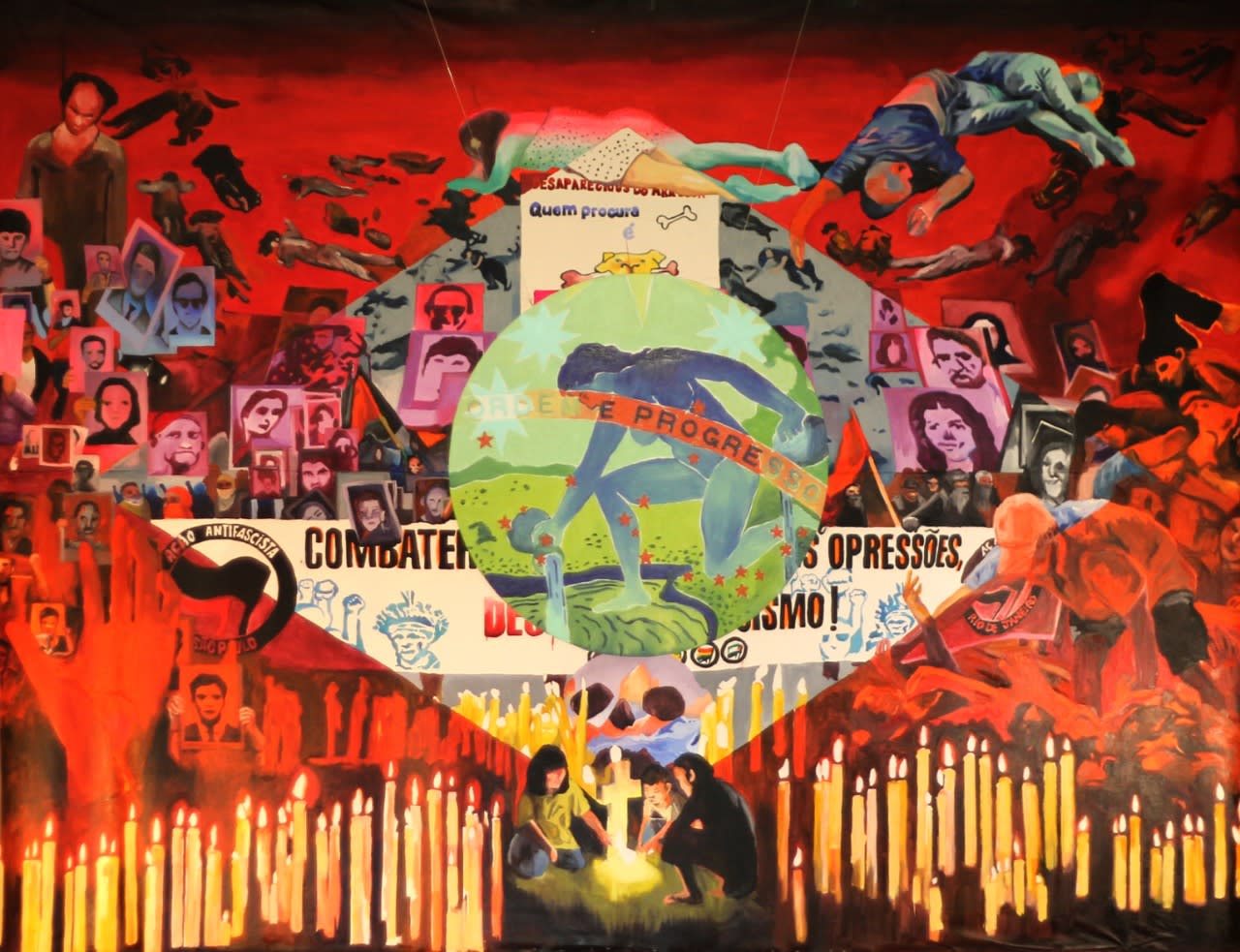Marcela Cantuária
Fantasmas da Esperança, 2018
óleo e acrílica sobre tela e madeira [oil and acrylic on canvas and wood]
320 x 450 cm retângulo [126 x 177 1/8 in rectangle]
100 cm círculo [39 3/8 in circle]
100 cm círculo [39 3/8 in circle]
Further images
A obra 'Fantasmas da Esperança', é uma pintura em grande formato, com 320 x 450 cm e tem como ponto de partida a narrativa ao avesso da história tida como...
A obra "Fantasmas da Esperança", é uma pintura em grande formato, com 320 x 450 cm e tem como ponto de partida a narrativa ao avesso da história tida como oficial. A pintura traz como protagonistas pessoas que estiveram na clandestinidade, sofreram desaparecimento forçado, foram torturadas e mortas durante as ditaduras civil-militar na América Latina. A composição obedece ao formato da bandeira do Brasil, tendo a sua cor verde substituída pelo vermelho, uma vez que o significado de Brasil, no tupi-guarani, é vermelho feito brasa. No plano circular, o centro da bandeira, está representado o arcano da Estrela, do tarot de Rider Waite-Smith. O arquétipo traz a consciência do passado e nos faz crer na esperança de uma mudança profunda.
The work, "Fantasmas da Esperança", is a large format painting, measuring 320 x 450 cm and has a starting point at the counter-narrative of the history considered official. The painting brings as protagonists people who were in hiding, suffered forced disappearance, were tortured and killed during the civil-military dictatorships in Latin America.
The composition follows the shape of the Brazilian flag, with its green color replaced by red, since the meaning of Brazil, in the Tupi-Guarani language, is red like fire. In the circular plane, the center of the flag, is representing the star arcane, from the Rider Waite-Smith tarot. The archetype brings awareness of the past and makes us believe in the hope of profound change.
The work, "Fantasmas da Esperança", is a large format painting, measuring 320 x 450 cm and has a starting point at the counter-narrative of the history considered official. The painting brings as protagonists people who were in hiding, suffered forced disappearance, were tortured and killed during the civil-military dictatorships in Latin America.
The composition follows the shape of the Brazilian flag, with its green color replaced by red, since the meaning of Brazil, in the Tupi-Guarani language, is red like fire. In the circular plane, the center of the flag, is representing the star arcane, from the Rider Waite-Smith tarot. The archetype brings awareness of the past and makes us believe in the hope of profound change.





